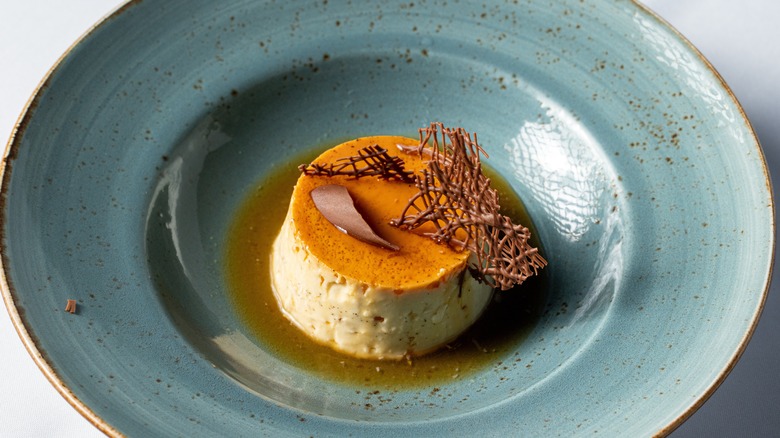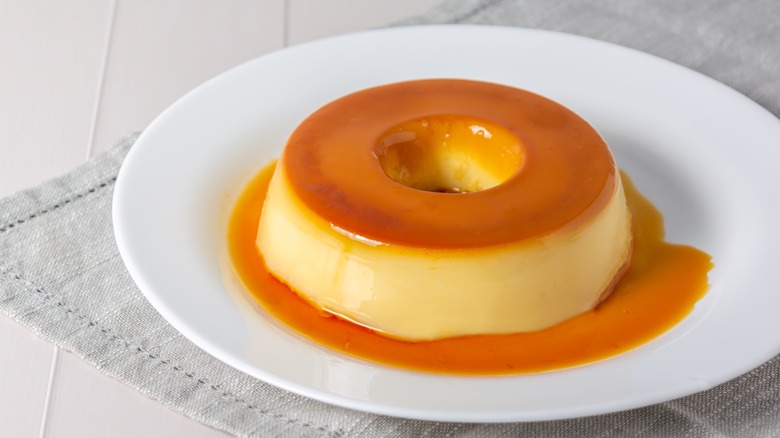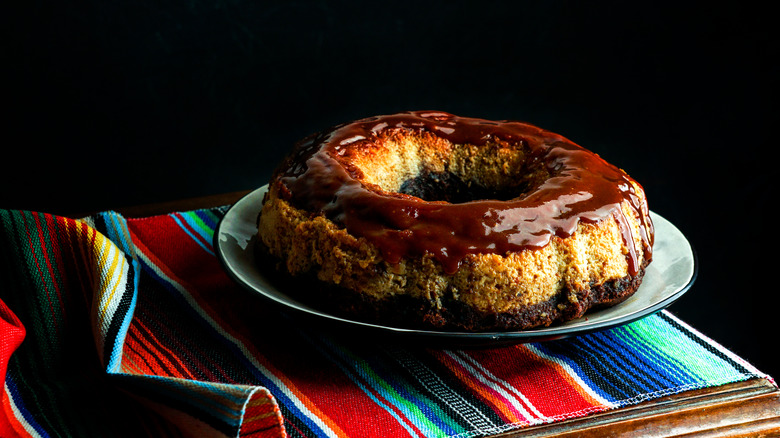The 2 Big Mistakes You Should Avoid When Making Flan
It can be hard to get your flan exactly as you want it. The silky smooth, caramelly custard dessert is no doubt a delicious treat, however, many home cooks fall short when first making this sumptuous, caramel-coated South American dish. That soft, smooth texture of a good flan is perhaps its biggest draw. However, if prepared improperly, the dish may turn out chunky or dimpled. And what budding home chef hasn't popped their pan out of the oven to find that it has become tough or has, even worse, split?
Well, there are two big mistakes that you might be making that are sabotaging your custard dessert endeavors. Perhaps the biggest issue flan-makers face is getting their dessert perfectly smooth in its texture, and this may be due to overmixing it before cooking. Overmixing may cause your flan to become clumpy as rapid motions suffuse your mixture with air bubbles. These bubbles can lead the custard to become pocked with unsightly air pockets that can lead to a sorry-looking final product. So though it may be tempting to whisk the mixture as you would a meringue or whipped cream, you will want to take a more gentle approach to combining your ingredients. Mixing in each element of the custard slowly will help create a smoother, less agitated mixture, that will cook more evenly without the addition of those cumbersome bubbles.
The smoothest flan imaginable
Another oft-repeated mistake many home cooks make when endeavoring to tackle the jiggly, custard treat is in failing to strain the flan mixture before cooking. Doing so will help you to achieve a smooth texture by removing potential lumps. The custard's egg base is also a potential point of failure. Though eggs are essential to setting your custard to a wobbly but solid state, they also contain membranes called chalazae. Chalazae are a white membrane that helps hold the yolk in place within the eggshell, and they are essential to the structure of an egg.
However, the membrane is also a hindrance to achieving smooth flan. Making sure to strain your uncooked custard before cooking will help to separate the membrane from everything else. On top of that, putting your uncooked mixture through a sieve can help to mix the custard without agitating it more than necessary. Making sure to avoid these two pitfalls will help you to make the most of your custard. Both mistakes contribute to a less-than-ideal texture to your dessert.
A custard to top a cake
Of course, once you've mastered the basics and are able to turn out perfectly smooth, glossy-top dishes of flan, you might want to begin enhancing your recipe. Like the classic crème brûlée, flan makes the perfect base for a whole variety of flavors. Infusing your flan with espresso would bring a new level of complexity to the dish which, when combined with the caramel sauce on the top, makes for the perfect post-dinner dessert. And adding bourbon to your flan would make for an unexpected but delicious twist. Another, though perhaps less obvious, flavor variation is matcha. Matcha is a powdered green tea that is often used to flavor various desserts such as ice cream and even cakes. Infusing your dessert with matcha would make for an unexpected but delicious twist.
However, if all of these variations still leave you feeling flat about your flan, you can always try leveling it up, literally, by turning it into a topper for your cake. Doing so makes a popular Mexican dessert called Chocoflan. Chocoflan is a chocolate cake with flan and caramel sauce on top. The dessert is the perfect meld of decadent chocolate cake with the light, not too sweet custardy taste of flan, with the perfect topping of caramel to meld the flavors of the two. Of course, that is just the start of flan's possibilities, and once you've mastered the recipe, the world will be your oyster (or flan, rather).


